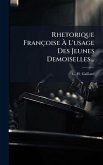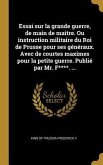Observations sur l'usage syntaxique de Ronsard et de ses contemporains, by Edvard Lidforss, offers a detailed examination of the syntactic practices employed by the renowned French poet Pierre de Ronsard and his contemporaries. This study delves into the nuances of 16th-century French syntax, providing valuable insights into the linguistic landscape of the era. The book includes an appendix featuring Joachim du Bellay's influential treatise, La Deffence et Illustration de la Langue Francoyse, a pivotal work in the development of French literary theory. Lidforss's work is essential for scholars of French literature and linguistics, offering a comprehensive view of the syntactic conventions of the period and their evolution. This volume provides a rich resource for understanding the stylistic and grammatical choices that shaped the works of Ronsard and his fellow poets. This work has been selected by scholars as being culturally important, and is part of the knowledge base of civilization as we know it. This work was reproduced from the original artifact, and remains as true to the original work as possible. Therefore, you will see the original copyright references, library stamps (as most of these works have been housed in our most important libraries around the world), and other notations in the work. This work is in the public domain in the United States of America, and possibly other nations. Within the United States, you may freely copy and distribute this work, as no entity (individual or corporate) has a copyright on the body of the work. As a reproduction of a historical artifact, this work may contain missing or blurred pages, poor pictures, errant marks, etc. Scholars believe, and we concur, that this work is important enough to be preserved, reproduced, and made generally available to the public. We appreciate your support of the preservation process, and thank you for being an important part of keeping this knowledge alive and relevant.
Bitte wählen Sie Ihr Anliegen aus.
Rechnungen
Retourenschein anfordern
Bestellstatus
Storno








